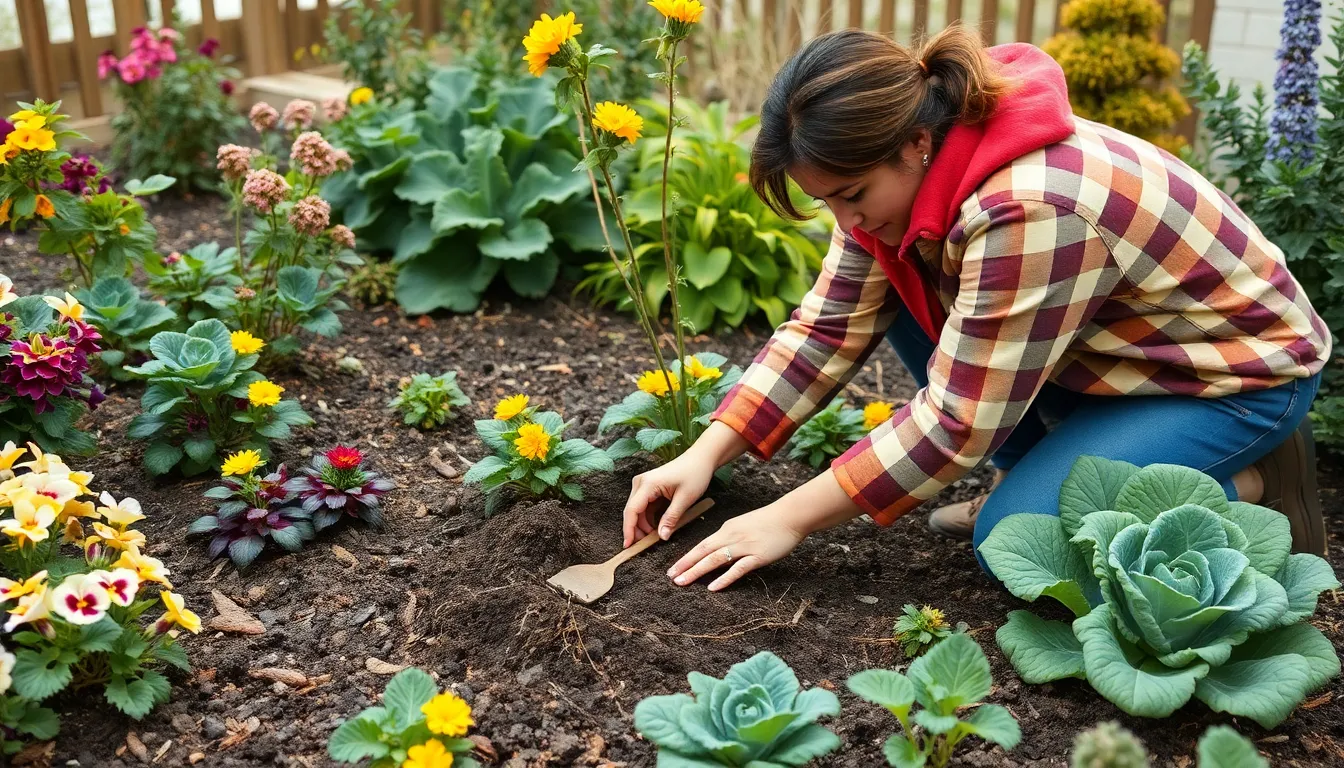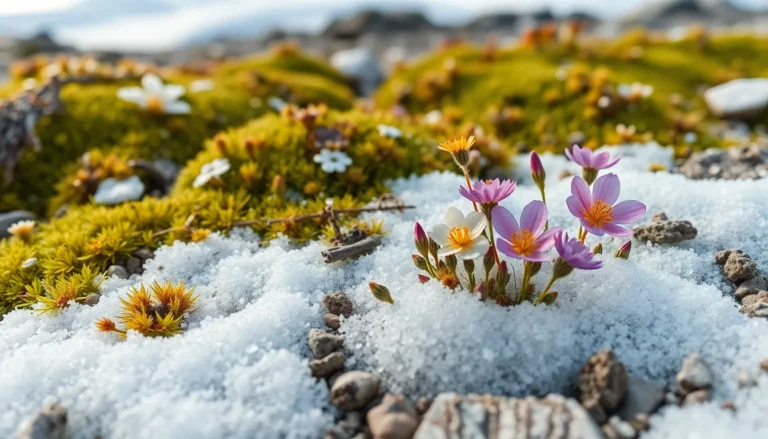
How to Protect Plants from Freezing: 10 Must-Know Tips for Winter Survival
As winter creeps in and temperatures drop, those leafy green companions might find themselves shivering more than a cat in a snowstorm. Protecting plants from freezing isn’t just a gardener’s chore; it’s a full-blown mission to save your botanical buddies from becoming popsicles. With the right strategies, your plants can weather the frosty onslaught and stay vibrant all season long.
How to Protect Plants from Freezing
Plants face significant threats from freezing temperatures. Knowing how cold conditions impact plant health helps gardeners take preventive measures.
The Impact of Cold on Plants
Cold exposure can slow or halt growth, leading to stunted development in many species. Freezing temperatures create ice crystals inside plant cells, causing ruptures that damage tissue. Some plants adapt to cold by entering dormancy. Certain types tolerate frost better than others, including hardy perennials and certain shrubs. Sensitive varieties often suffer irreversible damage, resulting in wilting or even death. Consistent exposure to temperatures below 32°F can compromise overall plant health, making them vulnerable to pests and diseases.
Signs of Frost Damage
Frost damage manifests through various indicators. Wilting leaves often appear first, followed by browning or blackening of tips. Discoloration can spread, signaling severe injury. Stunted growth and distorted shapes indicate underlying stress. In some cases, premature leaf drop occurs, revealing severe damage. Additionally, soft or mushy areas may develop on branches or stems, indicating cell death. Recognizing these symptoms allows for timely interventions, ensuring the best chance of recovery.
Preventative Measures for Cold Weather

Effective preventative measures help protect plants from freezing temperatures. Planning ahead is essential for maintaining plant health during cold weather.
Choosing the Right Plants
Selecting cold-hardy plants enhances survival chances during winter. Native species typically adapt better to local climates, offering resilience against freezing conditions. Opting for perennials often yields longevity, as they endure harsh winters compared to annuals. Many varieties such as pansies, sedums, and ornamental kale thrive in cooler temperatures. Additionally, consulting local gardening resources provides insights into the best plant options for specific regions. Choosing the right plants not only ensures better growth but also reduces maintenance efforts and minimizes losses.
Timing of Planting
Planting times significantly affect a plant’s ability to withstand cold. Early fall planting allows roots to establish before freezing conditions set in. Late spring to early summer represents another optimal period, giving plants time to grow robustly before facing winter. Monitoring local frost dates ensures planting occurs when conditions are most favorable. Understanding microclimates also aids in making informed decisions about when to plant, as areas can vary dramatically in temperature. Adhering to these planting times fosters healthier plants, better prepared to survive colder weather.
Effective Protection Techniques
Protecting plants from freezing requires strategic methods. Below are effective techniques to safeguard plants during cold weather.
Using Mulch for Insulation
Mulch acts as a protective layer for plant roots. It retains soil moisture and maintains temperature stability. Organic materials like straw, wood chips, or shredded leaves work well. Applying a 2 to 4-inch layer around the base of plants ensures effective insulation. This barrier helps in reducing frost penetration, which benefits the root zone during cold nights. Plants remain healthier as mulch provides crucial thermal support.
Covering Plants with Fabrics
Covering plants with protective fabrics offers immediate cold weather defense. Blankets, burlap, or landscape fabric can safeguard against frost. When using fabric, ensure it completely envelops the plant without restricting airflow. Securing edges with rocks or weights prevents lifting in strong winds. Removing covers during the day allows for sunlight exposure, which supports photosynthesis. Using this method protects sensitive plants and minimizes frost damage effectively.
Tips for Emergency Protection
Frost can severely damage plants. Employing emergency measures helps preserve their health.
Bringing Potted Plants Indoors
Moving potted plants indoors offers a straightforward solution. It prevents exposure to freezing temperatures. Before the temperature drops, she should bring in any sensitive plants, especially those in decorative containers. Ensure there’s enough light indoors to maintain their health. Placing pots near windows that get plenty of sunlight aids in keeping them thriving. Regular watering remains essential, but overwatering must be avoided during winter months.
Creating a Temporary Greenhouse
Constructing a temporary greenhouse acts as an effective barrier against extreme cold. Using PVC pipes or wooden frames, she can create a simple structure that encases her vulnerable plants. Covering the frame with clear plastic allows sunlight to enter while trapping heat. For better insulation, she could place blankets over the structure during the coldest nights. Ventilation remains crucial; opening flaps during the day prevents overheating. With this setup, plants stay warm and protected until the threats of frost pass.
Conclusion
Protecting plants from freezing temperatures is essential for maintaining their health and vitality during winter. By implementing the right strategies and techniques, gardeners can significantly reduce the risk of frost damage. Planning ahead and selecting hardy species will lay a strong foundation for winter resilience.
Utilizing mulch and protective coverings can create a barrier against the cold, while emergency measures like bringing potted plants indoors offer immediate solutions. Staying vigilant and recognizing signs of frost damage enables timely interventions that can save struggling plants. With these practices in place, it’s possible to nurture a thriving garden even in the harshest winter conditions.



